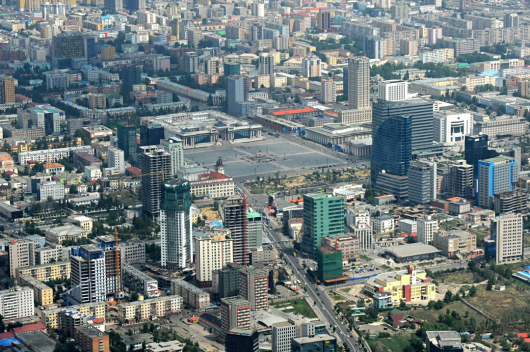Mongolia has taken early and decisive measures to prevent COVID-19 entering and spreading domestically across the country. Despite the limited cases confirmed in Mongolia, the household-level shocks caused by COVID-19 will be long-lasting and will disproportionally hit the poor and vulnerable the hardest, creating an urgent need for timely data collection to help monitoring and mitigating the socio-economic impacts of the shock.
To monitor the household-level impacts of COVID-19, the National Statistics Office of Mongolia (NSO) and the World Bank have implemented a joint COVID-19 Household Response Phone Survey (HRPS) on a national sample of 1,334 households. The HRPS drew a subsample from the 2018 Household Socio-Economic Survey (HSES). The survey questionnaire focuses on (i) economic transmission channels, (ii) information access and behavioral changes, (iii) access in education, health and financial services, (iv) coping mechanisms, and (v) welfare impacts of the COVID-19 pandemic.
This presentation summarizes the results of the first round of the HRPS, implemented from May 22 to May 29, 2020. The next round of the survey is scheduled in late August – early September 2020.
Key findings:
- Self-employed and agriculture households have been significantly impacted
16 percent of self-employed workers received zero income and 73 percent experienced income losses since end-January. This is mainly due to fewer customers, business-place closures and logistics disruptions due to COVID-19
70 percent of farmer and herder households reported their agricultural income has declined compared to the same time last year
- Salaried employment was less affected by COVID-19, yet more than one in three households reported wage income losses
- Nearly three-quarters of households, in particular 85 percent of the poor (those in poverty in the 2018 HSES), experienced some sort of shocks since end-January
12 percent of households experienced job losses
7 percent of households had to close their non-farm business
64 percent of households reported increase in price of major food items
- Food security is a serious issue for the poor
Nearly half of the poor were uncertain about their ability to obtain food in the past 30 days due to lack of money or rising prices. Three in four poor households were affected by the recent price increases of the major food items
One in four poor households (23 percent) expressed concerns about food security in the next week
- Alarming levels of concerns on household finances were reported
More than 40 percent of households, particularly the poor (53 percent), are worried about their finances in the next month
- Three in four households with school-enrolled children were engaged in distance learning activities.
The overall satisfaction on these learning activities is high but most children need assistance from other household members at home.
- No major disruptions in access to health and financial services under the COVID-19 pandemic were observed
 3,575.44
3,575.44












Related News